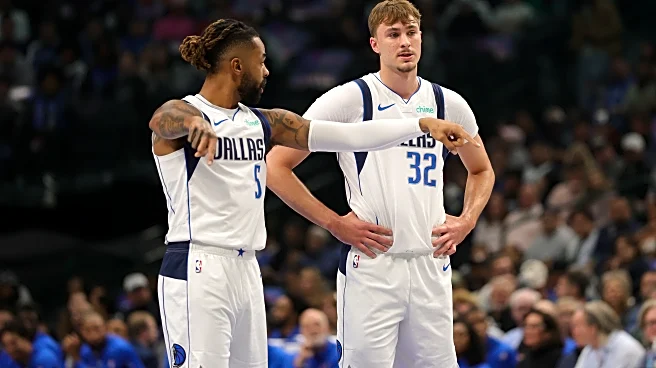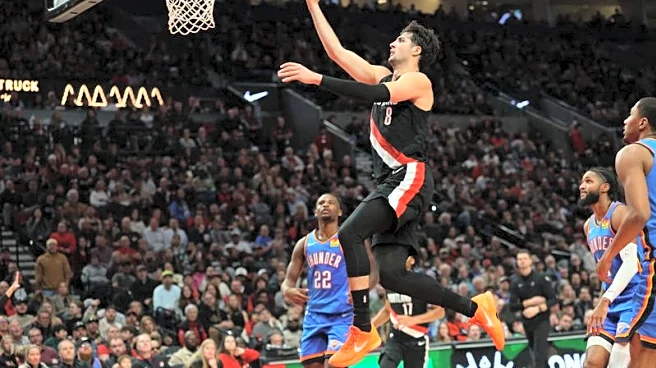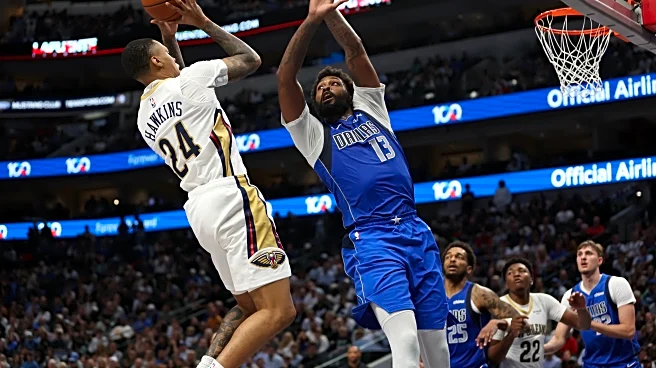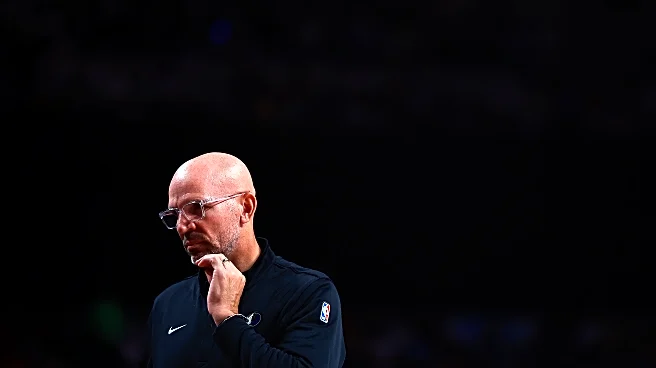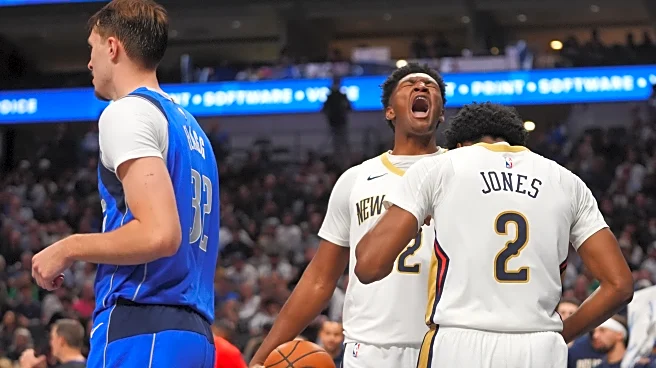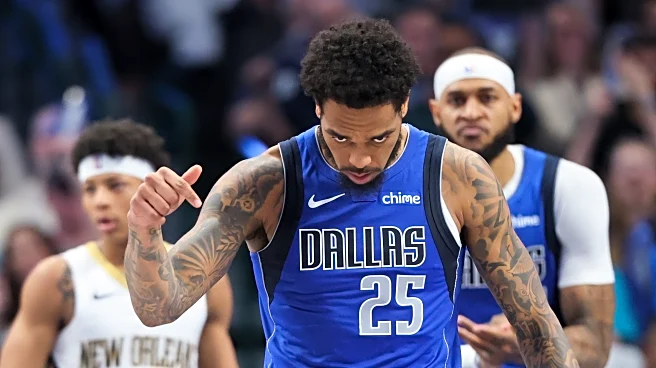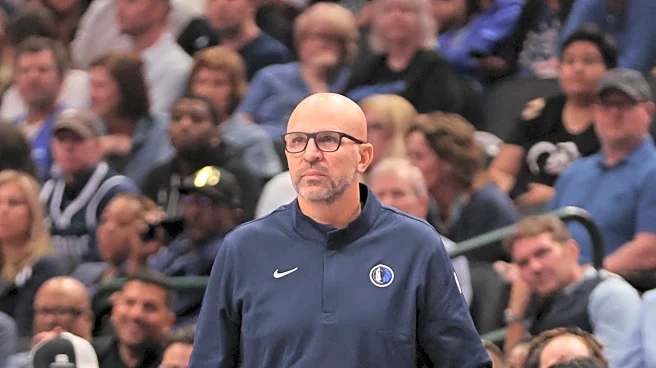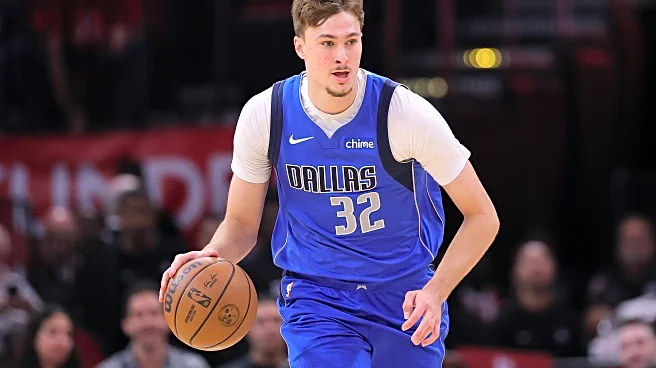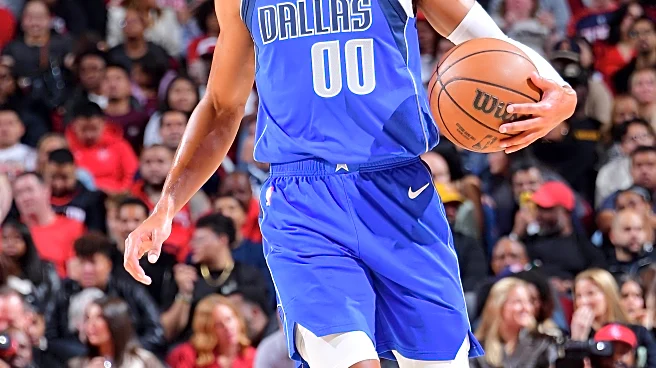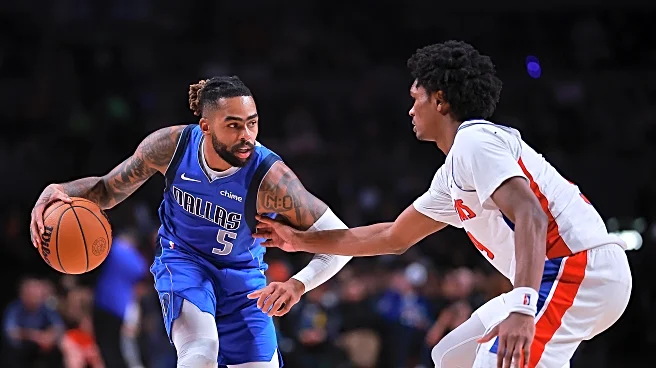The Dallas Mavericks are 2-7 and currently sit at 15th place in the Western Conference. There are 15 teams in the Western Conference. For a team with title aspirations and a luxury tax bill, this start
is a disaster of epic proportions. The team has already been ravaged by injuries, which, given the personnel, is only remotely surprising because of how mercilessly swift the hammer came down. Things are not good.
Although we’ve been told many times throughout the last nine months that “defense wins championships,” many in Maverick land have failed to consider that the game is About a Bucket. And after all, who could blame them? If you’ve been watching the post-Luka Doncic Mavericks, you may have forgotten what baskets look like. Nico Harrison, Patrick Dumont, and the rest of the Yes Men and Paycheck Collectors in the front office may have assembled the current roster with the genuine belief that you can win games without scoring points. The product on the floor certainly makes a good argument for that theory.
The Mavericks are dead last in the NBA with a 103.2 Offensive Rating. That mark is a full 2.5 points worse than the perpetually lowly Washington Wizards, who embarrassed Dallas on its home floor two weeks ago. And things are actually much worse than that. Per Basketball Reference, when adjusted for era, the Mavericks have the worst relative Offensive Rating in NBA history.
How on Earth did we get here? How is it possible that after seven years of watching the greatest individual offensive talent of all time, Mavericks fans now have to suffer through a depolrable slugfest every night? And, given the skill level of lots of players on this roster, why can’t they score points?
Well, first and foremost, the Mavericks can’t shoot. They are 24th in the NBA in three-point attempts per game and 28th in percentage. And if it wasn’t for Max Christie and his surely sustainable 47.7% on 5.5 attempts, those figures would be even worse. A team of bad shooters is creating a ton of missed shots and bad spacing. Looking at the roster makeup, we knew things would be like this.
But the bigger problem with this team is the guard play. Again, we knew that Dallas would struggle with its backcourt. With Kyrie Irving out until at least Christmas and Dante Exum nursing the world’s most mysterious and annoying injury, the guard room in Dallas is being held together with duct tape and chewing gum. Taxpayer MLE All-Star D’Angelo Russell and former two-way contract find Brandon Williams are doing the best they can. Still, the tandem isn’t quite resembling the Doncic/Irving backcourt of yesteryear. That’s to say nothing of the Point Cooper Flagg experiment, which has largely been a disaster.
Unfortunately for Dallas, guard play is still incredibly important for success in the modern NBA. As fun as it sounds to assemble a team full of large, physical, athletic forwards to zig while the rest of the league zags, that only works if some of the guys you’re doing that with have legitimate guard skills. And while Flagg may get there one day, he was never going to do so in year one as a teenager.
Guards are essential for so many reasons, but the most crucial thing they need to do is create advantages. As the table setters for your offense, you need to count on them to read the defense, beat their point-of-attack defender off the dribble, and force help defense to react, triggering rotations and ball movement. Good offense is all about bending the defense and making it late to arrive at where the ball eventually ends up. The best way to do this is by generating paint touches, the area of the floor where defenders are most likely to scramble to.
I was inspired by a tweet from our editor, Josh Bowe, the other night during the Pelicans game, where he wisely pointed out how little the Mavericks touch the paint with a live dribble.
So, I decided to take this as a challenge. I went back and rewatched the loss against the Pelicans and hand-tracked every paint touch with a live dribble for both teams. I also wanted to see how productive these forays into the paint are in terms of points scored. For this exercise, I’m defining a “live-dribble paint touch” as any time the ball is dribbled while the possessing player has at least one foot touching the paint. Since the game happens fast and NBA players are so skilled and long, it wasn’t always easy to track this. So, I included any play where the possessing player gathered the ball as they hit the paint, because so many shot attempts and passes happen in this manner. I also excluded transition and only counted half-court possessions. This is a completely unofficial tally that is likely riddled with errors, but by my count, the Mavericks had:
- 91 half-court possessions
- 31 possessions with a live-dribble paint touch
- 32 points scored in those possessions
- 1.03 points per possession (PPP)
Meanwhile, the Pelicans had:
- 88 half-court possessions
- 31 possessions with a live-dribble paint touch
- 28 points scored in those possessions
- .90 PPP
So, the Mavericks and Pelicans actually had the same number of live-dribble paint touches, though the Pelicans had a higher percentage due to fewer total chances in the half-court. But hey, Dallas actually got better results! They improved as the game went on, with Brandon Williams doing a lot of heavy lifting as the only guard with juice on the roster. The bad news: barely eeking out ahead of the New Orleans Pelicans in this category in a game you lost anyway is no cause for celebration. New Orleans without Zion Williamson this year has a 103.2 Offensive Rating, identical to Dallas’ historically awful mark. They also struggle with guard play, as their best creator is a 19-year-old rookie. If this is the company Dallas is keeping, things are bleak.
Just for fun, I decided to repeat this exercise for the Pistons game in Mexico City, a contest that saw Dallas get thrashed in paint points, 72-26. Detroit has a fearsome lead creator in Cade Cunningham, who carved the Mavericks up with 21 points and 18 assists. In this game, Dallas had:
- 96 half-court possessions
- 31 possessions with a live-dribble paint touch
- 30 points scored in those possessions
- .97 PPP
Pretty similar results to the Pelicans game. The Pistons had:
- 94 half-court possessions
- 34 possessions with a live-dribble paint touch
- 48 points scored in those possessions
- 1.41 PPP
Detroit was killing Dallas in this category early, but Kidd seemed to adjust and overloaded the paint a bit as the game went on. Things ended up pretty close in terms of total paint touches, but the Pistons obliterated the Mavericks in production off these possessions. That’s the other part of the equation here; while live-dribble paint touches are almost always good for an offense, you still need the ball handler to be a genuine threat to put the ball in the basket or find a teammate. Cade Cunningham is that guy. D’Angelo Russell and Brandon Williams are not.
Some might say that it’s not fair to evaluate the Mavericks in this manner by using two games in which Anthony Davis, their best player, didn’t play. After all, Davis can generate paint touches and make things easier for his guards, too. So, I spun the wheel one more time and crunched the numbers for the 10/27 loss against the Thunder, a night where Dallas got similarly slaughted in the paint (68-36). In this game, the Mavericks had:
- half-court possessions
- 21 possessions with a live-dribble paint touch
- 24 points scored in those possessions
- 1.14 PPP
Against an elite defense in OKC, the Mavericks generated significantly less live-dribble paint touches. On the other side, the Thunder had:
- half-court possessions
- 37 possessions with a live-dribble paint touch
- 41 points scored in those possessions
- 1.11 PPP
Sure, Dallas was a bit more efficient with its limited chances, as OKC missed a ton of bunnies and got a rare off-game from Shai Gilgeous-Alexander. But even with those qualifiers, the Thunder absolutely bluggeoned Dallas here. Role players like Ajay Mitchell and Aaron Wiggins were putting the Mavericks in the blender and showcasing creation juice that the Dallas roster can’t match.
All three of these games were clutch games. And in all three of these games, Dallas either outshot or equaled their opponent from three-point range. Against the Pelicans, both teams hit 10 threes. In Mexico City, Dallas made 16 threes to Detroit’s nine. And the Mavericks (12) doubled up the Thunder (six).
This wasn’t supposed to happen. The Mavericks were supposed to lose the three-point battle most nights; that was baked in. But instead, they’re dropping these games in large part because they cannot generate easy shots. Their offensive creators cannot collapse the defense in the paint. Everything is way too difficult. And unless something drastic changes with this roster, things are not getting better anytime soon. This is what Nico Harrison wanted. I hope he’s enjoying it.
